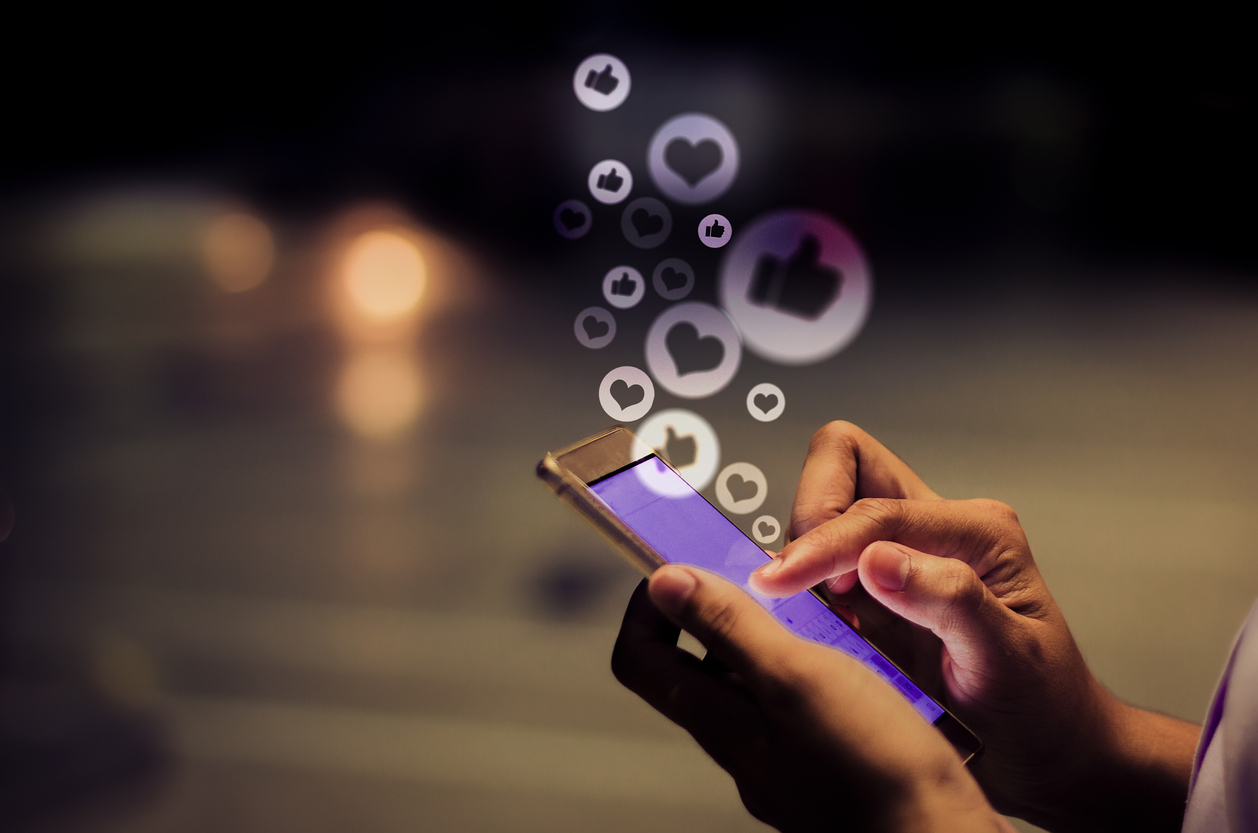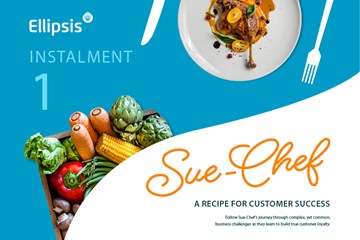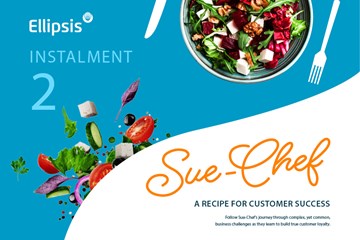What Exactly is a Customer Loyalty Strategy?

“All good strategy eventually degenerates into work”1
The ‘work’ in a loyalty strategy ensures you are chosen when a customer buys.
If a customer buys, you want them to choose you, every time.
Simple objective, complex subjects, many levers, endless variations, lots of work. If your Loyalty Strategy is working, you should be the choice at each purchase step –
- Intent to buy,
- Research options to buy,
- Decide what to buy,
- Purchase
Intent
Marketing influencer Byron Sharp has argued2 that the loyalty work for a brand is to establish mental and physical availability, awareness, so that when a customer is intending a purchase you are the easy, preferably only, choice. Making your product the automatic choice for us genetically lazy customers is the ‘Sharp’ strategy.
The Ad Contrarian, Bob Hoffman puts it more succinctly; “All of the world’s hugely successful brands have one common characteristic. They are famous. A brand that is famous has enormous advantages over its competitors that are not famous.”3 Part of the work in a loyalty strategy is the effort required to make your brand famous.
There is a role for differentiation in your value proposition, as brand awareness (fame) is a combination of both recognition and recall, “…if you are staring at a Google search bar, recognition is not going to help you in the least. You need to recall the brand without help”4 It is for recall that customer loyalty programs work to create an emotional engagement with customers, to establish ‘genuine’ loyalty5. But…
We are scared because we run from the bear6
(We do not run because we are scared).
Customers buy brands and develop emotional bonds.
(They buy because they trust the brand).
Customers build emotional bonds with brands and programs through purchasing experiences that do not disappoint, that build a sense of trust that the brand is a reliable supplier of the brand promise.
Emotional bonds follow as the customer accepts you always deliver to their expectations. Once established these bonds influence purchasing decisions, but it is impossible to get customers to run, then be scared, without the reliability bear.
Customers are not actively searching for emotional bonds with brands, they are looking for shortcuts and confidence in their purchases, so build trust, not psychological shortcuts7.
An accurate reminder, conveniently on a post-it for your screen,8


If you are fortunate enough to get them to enrol in your program, do your best to reliably meet their expectations, “…companies create loyal customers primarily by helping them solve their problems quickly and easily.9”
There is a time and place to Delight customers, but it comes in the second tier of the Ellipsis Customer Experience hierarchy, after trust has been established.10
The Ellipsis Loyalty Hierarchy



Earning customer loyalty requires you to meet a hierarchy of requirements, analogous to Maslow's hierarchy of needs in that each level must be satisfied before the next becomes important. A personalised email cannot make up for lack of stock, and a friendly call centre agent cannot make up for a regularly incorrect order delivery.
Personalisation goes hand in hand with ‘easy’ - minimising friction for customers often requires you to dynamically adapt to individual customer needs and preferences. But what distinguishes personalised service from 'creepy'? Trust.
Research
If your brand has established availability and customers do not even consider competitors when they buy, your strategy is working. For the moment.
If competitors are considered they will be using variations of four propositions, trying to influence the customer’s research in their favour11,
- Operational Excellence – lower prices, ‘we are cheaper’ or
- Product Leadership – innovative, better, differentiated products, ‘we are cooler’ or
- Customer Intimacy – personalisation, customer experience optimisation ‘we look after you better / make it easier.’
- Exclusivity – the claim that the offer is so differentiated and unique “you can only get it from us,’ or they have a patent.
Each of these can guide successful loyalty propositions,
- Walmart and Aldi - low prices keep customers,
- Apple products and innovations inspire high repurchase, and
- Service brands like Nordstroms understand the asymmetrical consequences of bad service, 95% of bad service experiences are shared widely and good experiences not12.
- Nestle’s patented coffee pod system is a historical example of the ‘exclusivity’ strategy, with sales taking off in 1988 with the launch of ‘Club Nespresso’. The patents started lapsing in 2012, by then the machines were so ubiquitous that most competitors simply competed with compatible pods13. As platforms like google and meta have leveraged network effects to advantage, they have become functional monopolies, relying on ubiquity rather than the legal system.
Simple strategy? Always have the cheapest prices, best products and best service and you have a killer customer loyalty strategy nailed. If they know about you.
Decision
Influencing the purchase decisions of customers is the objective, Loyalty Programs work their magic here.
“A loyalty program enables loyalty marketing, which can be defined as paying attention to customers and treating them accordingly. It reflects a business strategy where the brand is centred on the customer to a degree that the customer feels prioritized — and loyalty — from the company and brand.”14
When designing the work required for Loyalty Program success, consider.
1.Customers vary in ways that are directly relevant to program design and execution.
Some exhibit a fear of missing points if they buy outside your program so consciously or unconsciously decide to buy from you. Others do not covet points but still like your proposition.
Your loyalty strategy should result from a good understanding of the psychological levers provided by a non-cash loyalty currency15. Understand your customers decision-making to avoid wasting money on stuff that does not influence them.
Also, there are marked cultural differences in the customer’s response, with Individualistic cultures (USA, Australia) less influenced by personalisation than customers from collectivist cultures (China).
And cultures do change; reciprocity has been a mental trigger long used by programs, but the success of cash back rewards shows a decrease in the potency of this social mechanisms.
Individual customers vary in their emotional calculation of the effort/reward offered by the program as they judge if engaging is worth it for them.
And repetition matters. The same customer will change their attitude, viewing instruction a plus then a nuisance as they gain experience buying from you.
2. Product & Service Categories vary in their inherent ability to engage customers emotionally.
Reflect on the difference in customer intensity in these categories: Children & Pets versus Power & Water. In which are customers likely to consider price the critical factor?
Changing the way customers instinctively react to your category is harder than adjusting your loyalty strategy to match the way they were born. If you are in a low engagement, commodity category, low price is an obvious option, customer intimacy will require a lot of work, innovation may be difficult (one kilowatt is the same as any other) but not impossible… work on aligning your loyalty strategy with the ‘nature’ of customer autonomic responses to your category.
These differences have practical impacts, customers are less willing to share their data if the category does not matter to them.
3. Maintaining Trust is also critical work, never accept backsliding.
The importance and popularity of customer feedback programs is testament to the need to earn, test and maintain customer trust at the ‘Meets Needs’ layer of the Ellipsis pyramid.
Failures here inevitably diminish the performance of loyalty programs anchored in the ’Easy’ layer and your loyalty card joins the many others in the customer’s drawer, moved there, from her pocketbook, because ‘I can’t be bothered to scan’.
Purchase
The work of Loyalty does not stop when the customer has been influenced and has decided to purchase from you. There is work to be done, money to be made in influencing the way the customer pays.
Credit Card Loyalty Programs have for many years worked to make one payment method ‘front of wallet’ for customers as they buy. Striving to achieve preference over competitors credit cards but also other ways to pay, like cash, debit or even cheque. In the US, many retailers made using their credit card mandatory for loyalty program participation e.g., Macys, Target, David Jones (AU).
Paying by subscription rather than once is not new, is attracting renewed attention, partly because of the success of Amazon Prime, a subscription ‘loyalty program’. “It was never about the $79,” said Vijay Ravindran, who worked on the team that launched Prime at its original price of $79 per year. “It was really about changing people’s mentality so they wouldn’t shop anywhere else.”16.
Convincing your buyers to pay in a way that increases their loyalty is another piece of work for your loyalty strategy.
Customer Loyalty: if it was easy, everyone would be doing it.
We are Ellipsis, the Customer Loyalty Experts. We help businesses thrive through solving complex customer problems. Please get in touch, we’d love to talk.
Reference:
1.‘Peter Drucker
2.How Brands Grow Byron Sharp 2010
3.NEWSLETTERS | bobhoffmanswebsite
4.Byron Sharp is ignoring 60 years of published work’ | Contagious “Do you know why How Brands Grow is popular? One reason is that it’s simple, but also because he [Byron Sharp] says it’s different. So, differentiation is why he has grown.”
5.We have always struggled to detect a difference between revenue from habitual and emotional loyalty and argue that the investment required to deliver profits through either should be the critical criterion, not a philosophical belief that one is inherently ‘genuine loyalty’ and the other not.
6.The work of Dr. Hugo Critchley on how the brain interprets responses from the autonomic nervous system as emotions and judgements is recommended for those interested in this field.
7.Ellipsis On Point White Paper
8.Look at your brand from the customer’s perspective, not the other way round (marketingweek.com) and Sarah carter - Global Planning Partner - adam&eveDDB | LinkedIn
9.Stop Trying to Delight Your Customers (hbr.org) these authors propose a Customer Effort Score to measure how well companies achieve this goal. This metric has been somewhat eclipsed in the business psyche by the NPS juggernaut.
10.Ellipsis On Point White Paper
11.The Discipline of Market Leaders: Choose Your Customers, Narrow Your Focus, Dominate Your Market: Wiersema, Fred, Treacy, Michael: Amazon.com.au: Books 1995.
12.Zendesk_WP_Customer_Service_and_Business_Results.pdf (d16cvnquvjw7pr.cloudfront.net) “More participants reported they shared stories about bad customer service (95%) than told about good experiences (87%)” The apocryphal Nordstrom story has a customer returning auto tires after thousands of miles of use for a full refund, no questions asked. Nordstrom does not sell tires The Nordstrom Way: The Inside Story of America's #1 Customer Service Company - Robert Spector, Patrick D. McCarthy - Google Books.
13.A Brief History of Coffee Pods - Perfect Daily Grind
14.Reenvision Loyalty Series: Loyalty Unstuck | by Loyalty Science Lab | Jan 2023 | Medium
15.Ellipsis On Point White Paper
16.THE AUTOMATIC CUSTOMER Warrillow, John. Penguin Books Ltd. Subscription pricing is an important consideration for loyalty strategy in many categories, including the traditional ‘up-front’ purchasing of Microsoft products that are now subscriptions.




